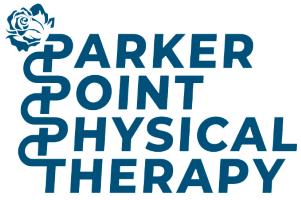Pelvic Health
Physical Therapy
Physical Therapy
We prioritize personalized care and individualized treatment plans for each patient.
We take the time to understand your unique needs
and goals to ensure you receive the best possible care.
We take the time to understand your unique needs
and goals to ensure you receive the best possible care.
- Bladder & Bowel DisordersUrgency & frequency of urination; urinary incontinence or retention; pelvic organ prolapse; interstitial cystitis (painful bladder syndrome); abdominal pain & bloating; constipation, straining & incomplete emptying; irritable bowel syndrome (IBS)
- Pelvic Pain & DysfunctionClitoral pain (clitorodynia); dyspareunia (painful intercourse); endometriosis; pudendal neuralgia; general pelvic pain
- Core & Muscular IssuesDiastasis recti; postsurgical rehabilitation; temporomandibular (TMD/TMJ)‑related pelvic tension; orthopedic‑related pelvic dysfunction
- Men’s Pelvic HealthErectile dysfunction; benign prostatic hyperplasia (BPH); male pelvic pain
- Women’s Pelvic HealthPregnancy & postpartum care; menopause‑related symptoms; reproductive health & sexual dysfunction
- Pediatric Pelvic HealthDevelopmental concerns & urinary/bowel dysfunction in children
- Lymphatic & Soft‑Tissue TherapiesLymphatic drainage techniques; myofascial release and manual therapy for pelvic floor support
What to Expect at your first
Pelvic‑Floor Therapy Session
Pelvic‑Floor Therapy Session
Intake & History
You’ll begin with a detailed review of your medical history, symptoms, and goals so your therapist fully understands your needs and what brought you in.
Physical Assessment & Internal Exam
Your therapist will observe posture, breathing, and core engagement. With your consent, they’ll offer a gentle internal pelvic‑floor muscle exam to assess tone, strength, and coordination. If you’re not ready for an internal exam on your first visit, no problem—you can defer it to a later session. However, that internal assessment is crucial for creating the most effective treatment plan.
Education & Treatment Planning
You’ll learn the basics of pelvic‑floor anatomy and how your muscle function relates to your symptoms. Then your therapist will explain their findings and recommend hands‑on techniques (manual release, myofascial work), biofeedback or guided exercises, and movement strategies tailored for you.
What to Wear
Choose comfortable, loose‑fitting clothes—athletic shorts and a T‑shirt work well. If you opt for an internal exam, bring underwear you don’t mind removing or adjusting.
Home Exercises & Follow‑Up
You’ll leave with simple at‑home exercises, posture and breathing cues, and a plan for follow‑up visits to track your progress and refine your program as you improve.
Comprehensive Care for Pain Relief & Recovery
We focus on delivering personalized care with treatment plans tailored to each patient’s needs.
Our team takes the time to listen, understand your unique situation, and work with you to achieve the best possible outcomes.
Our team takes the time to listen, understand your unique situation, and work with you to achieve the best possible outcomes.
- - Pelvic pain, endometriosis, pudendal neuralgia
- Bladder issues (incontinence, urgency, prolapse)
- Bowel dysfunction (IBS, constipation)
- Pain during intercourse, sacral & hip pain
- Biofeedback & electrical stimulation
- Pregnancy & Postpartum Recovery
- Musculoskeletal conditions- Lower back pain, neck pain, shoulder pain, knee pain, ankle pain
- Sciatica, radiculopathy, osteoarthritis, jaw pain (TMJ dysfunction)
- Herniated discs, spinal stenosis, sacroiliac joint dysfunction
- Rotator cuff injuries, frozen shoulder, impingement syndrome
- Tennis elbow, golfer’s elbow, wrist and hand pain
- Hip impingement, bursitis, IT band syndrome
- Plantar fasciitis, Achilles tendonitis, foot and ankle injuries - Post-surgical rehabilitation- Hip, knee, and shoulder replacement
- Rotator cuff repair, ACL and meniscus surgery
- Spinal surgery recovery, lumbar and cervical fusion
- Fracture rehabilitation - Specialized services for:- Balance and fall prevention
- Chronic pain and fibromyalgia
- Postural dysfunction and ergonomic corrections
- Nerve entrapment syndromes (carpal tunnel, cubital tunnel, thoracic outlet syndrome)

